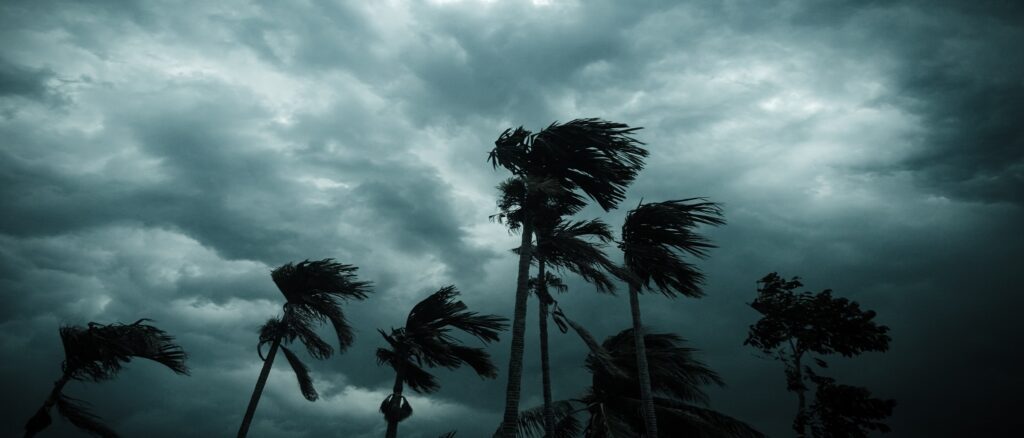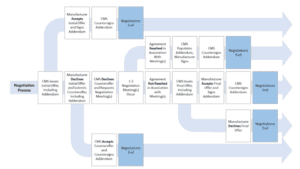How to help protect your business from hurricanes

5 minute read
Hurricanes are extremely dangerous weather events that can lead to injuries, property damage, and major disruptions in business operations. To best minimize your risk, it’s important to be proactive and take the time to prepare your business for a hurricane. Being well prepared can help alleviate fear and confusion, keep your personnel safe, and enable your business to continue operations off-site. Here are some key tips on how to help prepare your business for a hurricane and protect it should one occur:
Preparing for a hurricane
Develop a business continuity plan
Before a hurricane occurs, you should have a robust business continuity plan with written procedures that clearly outline what to do, where to go, and how to stay connected. It’s important to train employees on this emergency plan and conduct test runs to familiarize them with evacuation procedures and safety protocols.
Your business continuity plan should include the following, but is not limited to:
An emergency contact list
A diagram of the building and exits
The location of emergency storm kits, fire extinguishers, electrical box, and other important building features
A list of designated meeting places and safe shelters
Several hurricane scenarios with solutions
Instructions on how to continue business operations at an alternate location
Backup your data
In the event of an evacuation or temporary closure of your business location, having data readily available at an offsite location or on the cloud will ensure that your business operations are still able to run smoothly. To assist with this, consider following these guidelines:
Identify critical devices, applications, and equipment to be accessible at a different location.
Work with your IT department to make sure that essential data is constantly being backed up to a network drive or cloud storage system.
Supply employees with remote equipment, so they are able to continue to work offsite.
Secure your property and equipment
Identify areas on your property that may be vulnerable to the effects of high winds, heavy rain, and flooding. You should also seek professional advice from construction experts and structural engineers on the best ways to strengthen the interior and exterior of your building.
In addition to the above, consider these best practices when securing your property and equipment:
Regularly maintain your roof to prevent shingle damage caused by high winds and storm conditions.
Reinforce your roof, windows, doors, and exterior siding to withstand extreme weather.
Acquire essential protective materials such as shutters, plywood, sandbags, and plastic sheeting.
Keep a backup generator and test it periodically.
Properly seal the foundation of your building to prevent water seepage.
Implement drainage ditches to redirect water away from your property.
Ensure your sump pump is functioning correctly and has a backup battery.
Regularly clean out drains, gutters, and downspouts to avoid blockages and build up.
Secure loose exterior items that could possibly be blown away such as lawn furniture, equipment, and trash cans.
Trim or cut down trees so they do not fall on your building.
Create an emergency storm kit
When preparing for a hurricane, it’s important to have a well-organized and adequately stocked emergency kit. Here’s a list of items you can include in your emergency kit:
A copy of your business continuity plan
Facility shut down checklist
First aid kit
Personal protective equipment (PPE), including gloves, goggles, and boots
Battery operated or wind-up radio
Battery operated or wind-up flashlight, and matches and candles
Water bottles, and non-perishable food
Whistle
Basic tools, rope, and fasteners
Phone charger or portable charger
Toiletries, and hand sanitizer
Any medication you may need
You will want to ensure that your emergency kit is in a place that’s accessible to your staff. You’ll also want to make sure that your employees are trained and briefed on what’s in the kit. To learn more about what to include in your emergency kit and for additional tips on how to prepare for a natural disaster, visit the Government of Canada’s Get Prepared Webpage.
Stay informed and have a communication strategy
Visit Environment Canada’s Canadian Hurricane Centre to find out if your business is situated in a high-risk area for hurricanes. Here you can access valuable resources such as hurricane tracking information, weather warnings, and in-depth knowledge about the nature of hurricanes.
You can also stay informed by setting up weather alerts on your mobile phone. Weather apps, such as the Government of Canada’s WeatherCAN app, send you real-time alerts on current and forecasted weather in your vicinity. You can also tune into local radio stations and news channels for weather alerts and updates.
What to do during a hurricane
A hurricane can be an extremely frightening situation, but staying calm is crucial. Upon receiving a hurricane warning, follow authorities’ advice and evacuate your employees if instructed. It’s important that you follow your business continuity plan, take your emergency storm kit with you, and use your emergency contact list. If you are evacuating by vehicle, drive carefully and remember to maintain a safe following distance.
In some situations, evacuation may not be an option, and you may find it safer to shelter in place. Here are some tips to follow if you decide to stay put during a hurricane:
If you are in a high-risk area for a tornado that is not prone to flooding, locate a small, windowless room on the lowest level of a sturdy building.
If you are in a flood-prone area, seek higher ground to keep floodwaters away from you.
If it is safe to do so, have trained personnel board up windows, doors, and other vulnerable openings in your building. Otherwise, stay away from glass windows and doors to avoid injury.
Confirm that your fire protection equipment is fully operational, including the fire alarm system, sprinkler system, smoke detector, and fire extinguishers.
Follow your organization’s facility shutdown checklist, which may include things like turning off noncritical equipment and production processes.
Store important hardcopy documents, particularly those not backed up electronically, in a waterproof and fireproof safe box.
If possible, relocate vehicles and mobile equipment to a secure location, such as a garage. In flood-prone areas, elevate vehicles and mobile equipment to higher ground.
During a hurricane, it’s important to continue to monitor the weather forecast and local media. Make sure to keep your employees connected and informed of any alerts and action plans concerning the storm. Use multiple communication channels, such as email, text, and your company website, to ensure your staff is aware and prepared.
Returning to your business after a hurricane
Once the storm has passed, it’s natural to want to return to your business and assess the damages. However, do not return to your building until it is confirmed that the hurricane has passed, and the local media or authorities inform you that it is safe to do so.
Here are some inspection and safety tips that you should consider after returning to your business:
Have a structural engineer inspect your building and hire specialists to repair any damaged foundations, holes, and structures.
Get an electrician to test your electrical systems and repair any exposed or damaged wiring.
Before using any water supply, have a plumber test it for contamination that may have occurred during the hurricane.
Hire cleaners to perform a thorough cleaning of the facility.
Take photos and video of any damage to your property, equipment, and inventory, to serve as evidence for warranty claims and insurance purposes.
During the recovery period, ensure that you continue to follow your organization’s safety regulations and precautionary measures.
Protect yourself and your business
You may not always have control over what happens to your business, especially when it comes to extreme weather. But you do have the power to be proactive and prepared. Having the right protection in place can make all the difference to you and your business. To learn more about how the right coverage can help, visit our Business Insurance page today.
This blog is provided for information only and is not a substitute for professional advice. We make no representations or warranties regarding the accuracy or completeness of the information and will not be responsible for any loss arising out of reliance on the information.





